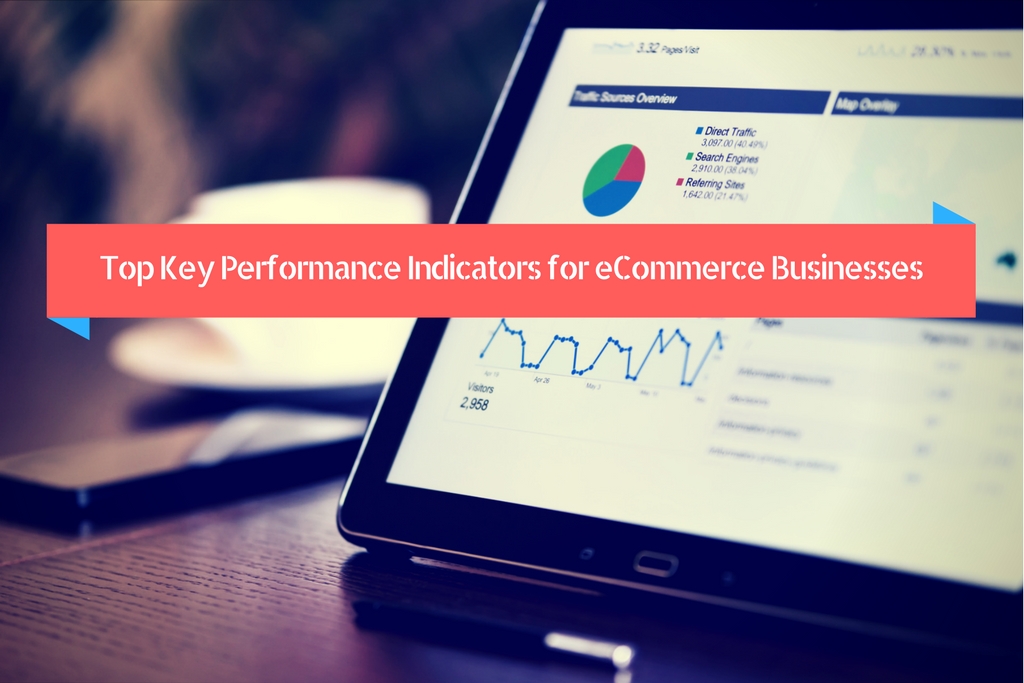Key performance indicators (KPIs) are the main metrics to monitor in order to retain your online business success. They can be an early alert if something is going wrong in your business operations. Moreover, they help you to observe your progress towards your sales, revenue and your business goals.
A performance indicator is a measure that can be quantified or simply a number that represents an aspect of your business data. For instance, if one of your business goals this year is to increase sales by 40%, then you have to look at certain indicator to observe your progress to achieve this goal. In this case, you might need to monitor the monthly total sales as this indicator of the sales at the end of the year.
Take into consideration that one business goals may need many indicators in order to have an overall overview of the goal performance indication.
When it comes to eCommerce businesses, there are certain key performance indicators that can be beneficial to measure the eCommerce venture health. Here is a list of the top X KPIs for eCommerce businesses.
1. Average Acquisition Cost
This indicator is used to measure the total cost to acquire a new customer. This metric can be also used to measure the efficiency of your acquisition channels.
Your aim is to reduce the acquisition cost as much as possible. Thus, you have to regularly check your marketing channels cost and make sure to pay for the channels that actually converts the traffic into paying customers. Paying for marketing channels that do not convert to customers can harm your profit margin.
How to calculate Average Acquisition Cost?
Primarily, you can calculate the Average Acquisition Cost by dividing the total costs spent on acquiring new customers (marketing expenses) by the number of customers acquired in the period the money was spent. Let’s say that your business spent $100 on marketing in a month and acquired 20 customers in the same month, then your Average Acquisition Cost is $5.
2. Average margin
After subtracting all of the supplying costs of the product, you end up with your net profit from each product. For this product, this is the margin profit of this product. To maintain a sustainable eCommerce business, you need to keep your average margin higher than the average acquisition cost.
Some of your products might have a high margin but on the other hand, other products might have low margin. That’s normal. And that’s why you need to keep an eye on the average margin of your business.
Another thing you can do to increase your margin is to negotiate a lower cost of the products with your suppliers. This would help you to earn more by increasing your margin without raising your online shop prices. Thus, eliminating the possibility of customers not buying because of the price sensitivity.
In general, you should keep checking on your margins routinely in order to attain a healthy profitable business.
How to calculate the Average margin?
The average margin can be easily calculated by subtracting the total revenue of the period (e.g. monthly) from the cost of the total expenses of the same period then divide the outcome by the total number of products in your shop.
3. Cart Abandonment Rate

With an average of 68% cart abandonment rate in the eCommerce industry. One must consider reducing this indicator value as much as possible.
There are different causes of your customers ending abandoning their carts:
- Complicated checkout process such as asking the customer to fill up a lengthy checkout form or requiring her to have a membership on the website in order to complete the checkout.
- Hidden costs that customers find out about in the checkout process such as taxes or high shipping fees.
- Limited payment options. some users may have no access to your store payment gateways, this will be a burden for them to complete the checkout.
In order to reduce the cart abandonment rate, you need to reduce the friction of the checkout process and makes it as smooth as possible by solving all possible causes and even by reaching out to customers directly and ask them for the reason behind the abandonment and trying to solve their concern.
How to calculate Cart Abandonment Rate?
You can directly calculate it by getting these values (Total Checkout Initiations, Completed Purchases)
Then we have Not Completed Purchases = Total Checkout Initiations – Completed Purchases.
Then you need to divide the Not Completed Purchases by the Total Checkout Initiations.
Example:
Clothes store have 300 orders this month, and their customers initiated checkout 700 times.
Then the Not completed Purchases = 700 – 300 = 400 purchases.
Then the Cart Abandonment Rate = (400 / 700) * 100 = 57%
4. Returns (Refund) Rate
Some eCommerce niches have a high return rate such as clothing, it is obvious why, isn’t it? Even in almost all the other niches, people return the products due to various reasons. A high return rate can be very dangerous to your business, it indicates that there might a problem in the quality of the products, or customers simply are not satisfied with it.
Collecting feedback from customers that returned a product is a must. This will help you get an overview of the common causes of the returns and take steps further to eliminate them. Also, provide as much as you can of the product’s details on the product page in order to let your customers know what exactly they are purchasing. A good quality product’s images are very helpful. Furthermore, you need to have a refund policy where users explicitly agree on it during the checkout process.
How to calculate Returns Rate?
Return Rate is calculated as the percentage of product returns accepted compared to total sales.
Return Rate = (Product Returns / Total Sales) * 100
5. Conversion Rate
Conversion Rate is one of the most important and crucial indicators for any eCommerce business. It’s the indicator that tells you how much of your traffic that actually becoming paying customers. You can probably get tons of traffic but with not a single sale.
Many reasons can be the reason of a low conversion rate, such as a bad website design, non-quality leads, no secure connection (SSL certificate), not enough details in the products pages, or bad quality products images.
For a better conversion rate measurement, it’s recommended to segment the traffic into sales funnels in order to calculate each marketing channel or traffic source own conversion rate. This will simplify the Rate Conversion optimization process for you.
How to calculate Conversion Rate?
The Conversion Rate can be easily calculated by dividing the number of paying customers by the total traffic. And you can measure the conversion rate for each marketing channel by replacing the numbers that are coming from that channel.
Conversion Rate = (Total number of paying customers / Total Traffic)
Other important indicators
Customer Lifetime Value
Customer Lifetime Value indicates how much individual customers spent on your eCommerce website. It’s calculated by subtracting the acquisition cost from the revenue earned from each customer.
Support Rate
Support Rate stress how many visitors or potential customers require customer support before they purchase a product. If this metric is high you should think about adding more information to the website in order to reduce the rate of support tickets opening.
